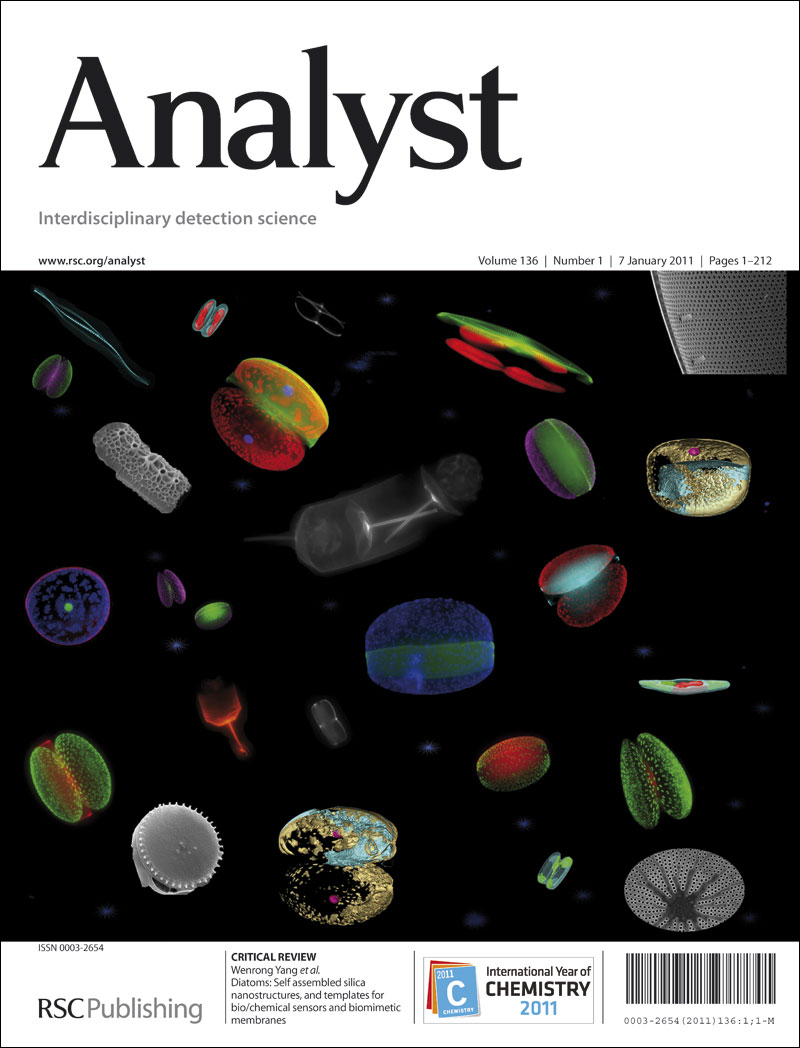Identifying and Minimizing Primary Sources of Temporal Broadening in Online Affinity Micro Free-Flow Electrophoresis
IF 3.3
3区 化学
Q2 CHEMISTRY, ANALYTICAL
引用次数: 0
Abstract
Affinity micro free-flow electrophoresis (µFFE) takes advantage of continuous separations to enable real-time measurements in biological systems. Competitive immunoassay reagents are mixed online and streamed into the µFFE device, where bound and free labeled species are separated in real-time based on their electrophoretic mobility. In the current manuscript we optimized the affinity µFFE platform to minimize the response time of the assay. Analyte response time was improved by 1) mitigating temporal broadening as analyte transited the fluidic system and 2) reducing surface adsorption. Fast iteration of the microfluidic parameters enabled optimization of temporal broadening due to longitudinal diffusion and parabolic flow. Minimizing incubation capillary length while ensuring adequate equilibration time for the competitive immunoassay improved rise times from 25-seconds to 9-seconds, a 2.7-fold improvement in temporal response. The response time of the assay worsened when immunoassay reagents were incorporated due to peptide surface adsorption. Dynamic coating with 0.005% w/v bovine serum albumin was shown to mitigate surface adsorption without interfering with the binding and separation of the immunoassay components, resulting in 2.8-fold improvement in overall signal and 2-fold improvement in temporal response, which improved from 61 seconds to 30 seconds.在线亲和微自由流动电泳中时间展宽的主要来源的识别和最小化
亲和微自由流电泳(µFFE)利用连续分离的优势,实现生物系统的实时测量。竞争性免疫测定试剂在线混合并流进µFFE设备,其中结合和自由标记物种根据其电泳迁移率实时分离。在目前的手稿中,我们优化了affinityµFFE平台,以最大限度地减少检测的响应时间。分析物的响应时间得到了改善:1)减轻了分析物在流体系统中的时间展宽;2)减少了表面吸附。微流控参数的快速迭代优化了纵向扩散和抛物流引起的时间展宽。最小化孵育毛细管长度,同时确保竞争性免疫测定有足够的平衡时间,将上升时间从25秒提高到9秒,时间反应提高2.7倍。当加入免疫分析试剂时,由于肽表面吸附,反应时间延长。结果表明,0.005% w/v牛血清白蛋白动态涂层可以减轻表面吸附,而不会干扰免疫测定组分的结合和分离,从而使整体信号提高2.8倍,时间响应提高2倍,从61秒缩短到30秒。
本文章由计算机程序翻译,如有差异,请以英文原文为准。
求助全文
约1分钟内获得全文
求助全文
来源期刊

Analyst
化学-分析化学
CiteScore
7.80
自引率
4.80%
发文量
636
审稿时长
1.9 months
期刊介绍:
"Analyst" journal is the home of premier fundamental discoveries, inventions and applications in the analytical and bioanalytical sciences.
 求助内容:
求助内容: 应助结果提醒方式:
应助结果提醒方式:


